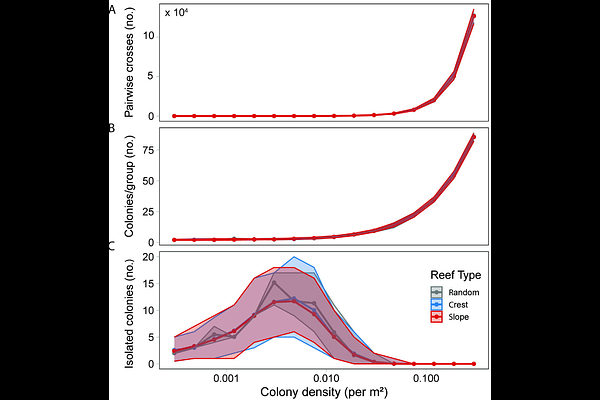Proximity and current alignment drives fertilisation success in a broadcast-spawning coral

Proximity and current alignment drives fertilisation success in a broadcast-spawning coral
Ricardo, G. F.; Doropoulos, C.; Humanes, A.; Lachs, L.; Martinez, H. M.; Sartori, G.; Chang, T. K. T.; Chui, A. P. Y.; Wong, E. L. C.; Stevens, J. R.; Popovic, I.; Guest, J. R.; Buccheri, E.; Idip, D.; Mumby, P. J.
AbstractAs coral populations decline under climate change and other stressors, surviving corals will become increasingly isolated. While Allee effects that reduce gamete encounters and fertilisation success may lead to reproductive and recruitment failure, the critical population densities and distances between individuals required to maintain viable populations remains uncertain. Here, we investigate the links between colony isolation and fertilisation patterns using an experimentally manipulated patch of the broadcast spawning tabular coral, Acropora hyacinthus. Corals were arranged in a clustered radial design, with colonies arranged at increasing distances radiating downstream from a central spawning aggregation. Fertilisation and paternity assignment analyses were used to examine the influence of parental distance, current alignment, colony size, and genetic relatedness. Fertilisation success declined sharply with increasing distance among corals, and paternity assignments indicated most parents were located within 3 m of each other, underscoring the importance of colony proximity. Additionally, fertilisation success was highest for colonies positioned downstream of the central cluster, and 84% of sequenced progeny were sired by colonies located directly upstream. Simulations of natural reef spatial population distributions projected onto a virtual grid, incorporating empirically derived parentage distances, indicated that populations remained well-mixed at typical adult densities in nearby reefs. However, as densities decreased to 1 colony per 100 m-2 (i.e. 0.01 coloniesm-2), reproductive isolation and the formation of patchy breeding units became prevalent. Overall, our findings highlight that the spatial arrangement and isolation of corals on reefs, and subsequent Allee effects on fertilisation, can jeopardise the reproductive success of broadcast spawning corals. Conservation efforts are needed to help maintain viable coral populations and successful reproductive aggregations for degraded reef systems.